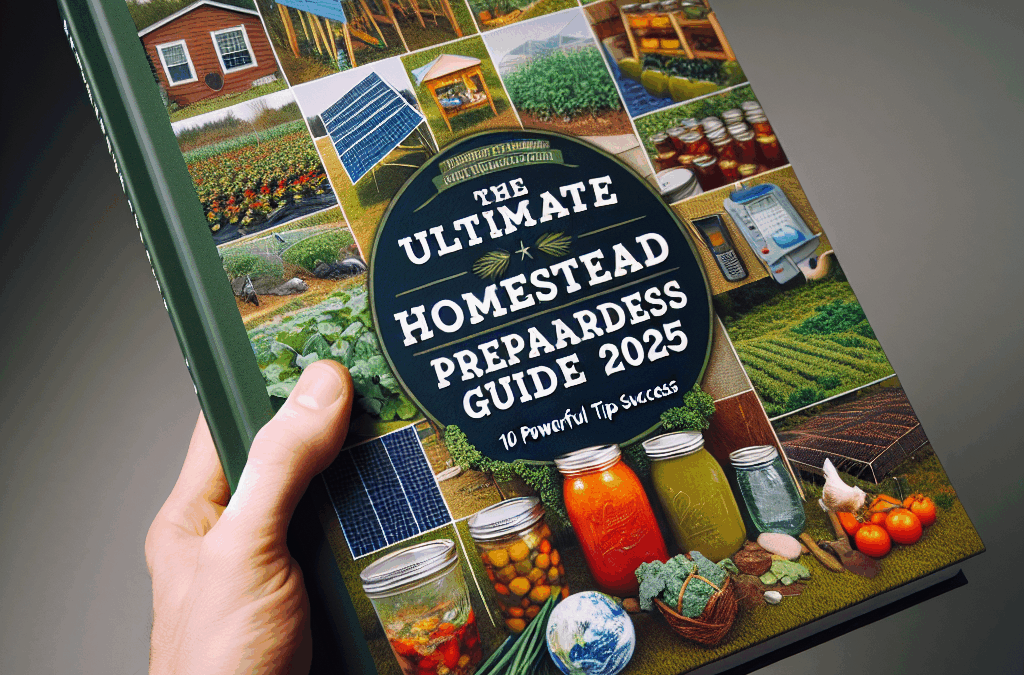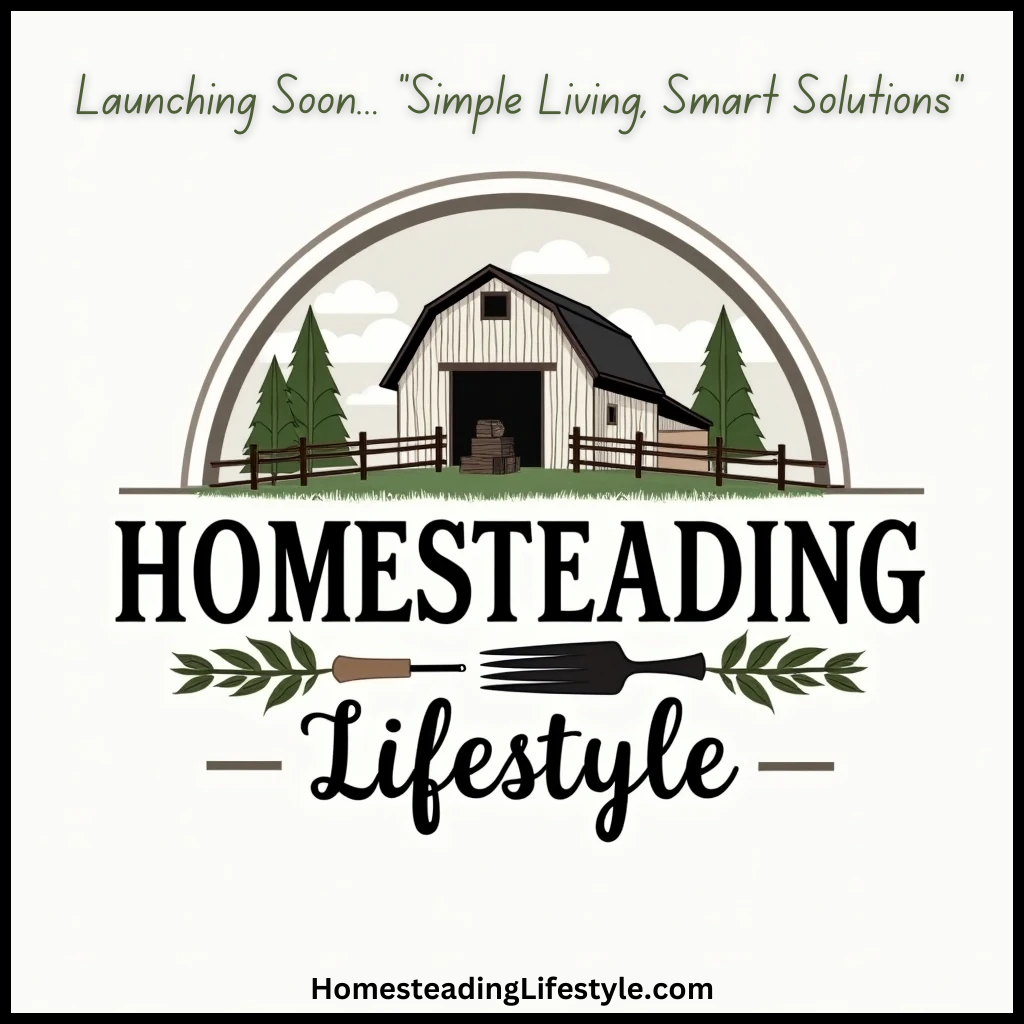Table of Contents
- 1. Focus on Strong Soil and Plant Health
- 2. Implement Effective Water Management
- 3. Cultivate Diverse and Resilient Crops
- 4. Use Humanure for Soil Fertility
- 5. Adopt Sustainable Energy Solutions
- 6. Develop Emergency Food Storage Strategies
- 7. Invest in Native and Adapted Species
- 8. Enhance Homestead Security Measures
- 9. Build Community Networking and Cooperation
- 10. Embrace Ongoing Education and Skill Development
1. Focus on Strong Soil and Plant Health
The Foundation of a Resilient Homestead
Healthy soil is the backbone of a successful homestead in 2025. As demand for sustainable living rises, improving soil fertility and structure is more critical than ever. My experience shows that investing in composting, crop rotation, and cover cropping significantly enhances soil health.
By analyzing soil tests regularly, homesteaders can tailor amendments like organic matter, minerals, and microbes to match their plants’ needs. This proactive approach results in more vigorous growth, pest resistance, and higher yields over time.
Remember, resilient soil supports drought resistance, reduces erosion, and promotes beneficial microbial activityâkey factors for enduring challenges in the coming years.
Practical Steps for Soil Improvement
- Create compost bins from kitchen and yard waste to enrich soil naturally.
- Practice crop rotation annually to prevent soil depletion and pest buildup.
- Use organic mulches to conserve moisture and suppress weeds.
2. Implement Effective Water Management
Water Conservation Techniques
Water management will be vital for homestead success in 2025, especially with climate variability. Installing rainwater harvesting systems and drip irrigation can drastically reduce water waste. My own homestead has benefited from collecting rainwater in barrels, providing a reliable supply during dry spells.
Educating yourself on local rainfall patterns and water rights helps optimize usage and avoid shortages. In drought-prone areas, graywater systems can further extend water supplies responsibly.
Storing water safely and planning for emergencies ensures your homestead remains resilient during disruptions.
Technologies for 2025 Water Security
- Use water level sensors and automatic shut-off valves for efficient system management.
- Integrate solar-powered pumps to reduce energy costs.
- Develop a water management plan and regularly test water quality.
3. Cultivate Diverse and Resilient Crops
Understanding Crop Diversity Benefits
In 2025, crop diversity remains one of the most powerful tools for homestead resilience. Monocultures are vulnerable to pests and disease outbreaks, whereas diverse plantings foster ecosystem stability. My farm has expanded into heirloom varieties and native plants, increasing resilience.
By selecting plants suited to local climate zones and soil types, you can reduce input costs and improve yields. Companion planting also discourages pests naturally, reducing the need for chemical interventions.
Implementing a variety of annuals, perennials, and grafted trees creates a resilient food system that adapts to changing conditions.
Planning Your Crop Portfolio
- Choose drought- and pest-resistant varieties adapted to 2025 conditions.
- Incorporate perennial vegetables like asparagus and rhubarb for stable harvests.
- Rotate crops annually to maintain soil health and prevent disease.
4. Use Humanure for Soil Fertility
Safe and Sustainable Fertilization
Using humanure may seem unconventional, but it is an effective way to recycle nutrients back into your homestead in 2025. Proper composting and sanitation precautions turn human waste into valuable fertilizer that enriches soil organically.
My own practice involves composting humanure in a covered system, ensuring pathogen destruction through sustained high temperatures. This process not only reduces waste but also improves plant growth and yields.
Staying compliant with local health regulations ensures safety and sustainability when using humanure as part of your homestead cycle.
Steps to Implement Humanure Systems
- Create a dedicated composting toilet or bucket system.
- Maintain appropriate composting conditions: aeration, moisture, and temperature.
- Periodically test compost for pathogens before applying to edible plants.
Conclusion
In 2025, following a comprehensive homestead preparedness guide is essential for building a resilient, sustainable, and self-reliant homestead. Each of the 2025 tips provided above contributes to your overall preparedness, ensuring that you can confidently meet future challenges. Remember, being proactive and continuously educating yourself are the keys to success in homestead living. Stay adaptable, keep learning, and leverage this homestead preparedness guide to thrive in 2025 and beyond.
Frequently Asked Questions
1. What is the best way to start a homestead preparedness plan in 2025?
The best way begins with assessing your current resources, setting clear goals, and prioritizing key areas like water, soil health, and food security. Use a step-by-step approach based on the latest tips in our homestead preparedness guide.
2. How can I improve soil fertility naturally?
Use composting, cover cropping, crop rotation, and organic amendments to naturally enhance soil health, which is foundational for productive homesteading in 2025.
3. Why is crop diversity important for homestead resilience?
Crop diversity reduces vulnerability to pests, diseases, and climate challenges, ensuring a stable food supply regardless of environmental fluctuations.
4. How does the homestead preparedness guide help in emergencies?
It provides practical strategies for resource management, security, and self-sufficiency, helping you withstand disruptions effectively.
5. What are some sustainable energy options for homesteads in 2025?
Solar, wind, and micro-hydro power systems are among the most effective sustainable energy solutions recommended for modern homesteads in 2025.






